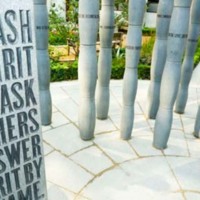
Gilt of Cain
Gilt of Cain was unveiled by the Archbishop Emeritus Desmond Tutu in Fen Court, City of London, in September 2008. The artwork, a collaboration by sculptor Michael Visocchi and poet Lemn Sissay, commemorates the abolition of the transatlantic slave trade. The granite sculpture is composed of a group of columns surrounding a podium – suggesting an ecclesiastical pulpit or slave auctioneer’s block. Extracts from Lemn Sissay’s poem, ‘Gilt of Cain’, are engraved into the granite.
Fen Court is the site of a churchyard formerly of St Gabriel’s Fenchurch St and now in the Parish of St Edmund the King and St Mary Woolnoth, Lombard St. The latter has a strong historical connection with the British abolitionist movement of the 18th and 19th centuries: Reverend John Newton, a slave-trader turned preacher and abolitionist, was rector of St Mary Woolnoth between 1780 – 1807. This project was initiated by Black British Heritage and the Parish of St Mary Woolnoth and was commissioned by the City of London Corporation in partnership with the British Land Company.
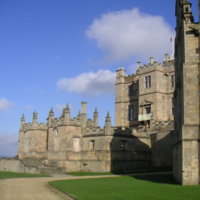
Slavery and the British Country House
In 2007 English Heritage (now Historic England) commissioned research into the linkages between properties in its care and transatlantic slavery, to coincide with events to commemorate the bicentenary. A report produced by historian Miranda Kaufmann identified 26 properties with some level of connection to slavery or abolition. As a result, more detailed surveys of four sites - Bolsover Castle, Brodsworth Hall, Marble Hill and Northington Grange - were commissioned in 2008, and the findings presented at the 'Slavery and the British Country House: mapping the current research' conference in 2009. The conference was organised by English Heritage in partnership with the University of the West of England, the National Trust and the Economic History Society. Findings were later published in 'Slavery and the British Country House' (2013), edited by Madge Dresser and Andrew Hann. The publication and the 2008 reports are available to download from Historic England's website.
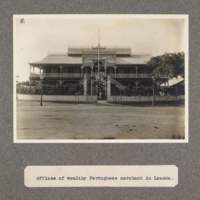
Offices of wealthy Portuguese merchant in Loanda
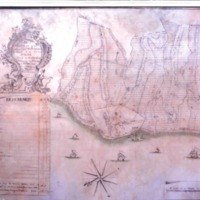
From Slavery to Freedom: Grenada to Paxton
Paxton House in Berwickshire was once owned by Ninian Home, the owner of two sugar plantations on the island of Grenada. The Wedderburn Papers, part of the house archives, contain some 2,000 documents relating to the Grenada properties between the 1760s and the 1840s. In 2007, the Paxton Trust began a project to digitise and increase access to all the documents relating to Grenada (including correspondence between Grenada and Paxton, plus documents relating to the plantations and their enslaved workers). A booklet and exhibition was also organised, and links were made with a youth group based in Acton, London, most members of which are of Grenadian descent. The Wedderburn Papers are held at the National Archives of Scotland.
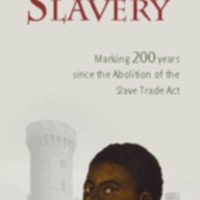
Wales and Slavery
The official publication produced to mark the bicentenary from the Wales Office.
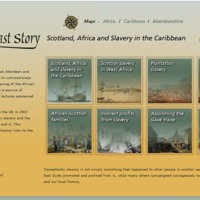
A North East Story: Scotland, Africa and Slavery in the Caribbean
This online exhibition and learning resource linking the history of transatlantic slavery to North East Scotland was organised by an Aberdeen and Aberdeenshire Bicentenary Committee, including representatives from Aberdeenshire Council, Aberdeen City Council, the University of Aberdeen, the Robert Gordon University and the African and African-Caribbean communities. It followed on from a service of commemoration and a series of public lectures sponsored by the Committee in 2007. The exhibition logo is inspired by the mythical Sankofa bird, a cultural symbol of the Akan-speaking peoples of Ghana in West Africa. Featured here are a number of resources available to download from the North East Story website.
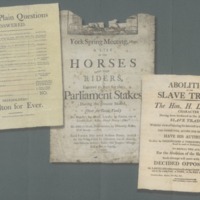
Harewood 1807
2007 saw a number of different projects taking place at Harewood House in West Yorkshire, home of the Lascelles family. The bicentenary was used as an opportunity to explore the family connections with the transatlantic slave trade and the sugar plantations of the West Indies.
As part of a newly developed Learning Programme, leaflets were produced setting out the family connections to Barbados. 2007 also marked the bicentenary of the Yorkshire election in 1807 contested by William Wilberforce, Henry Lascelles (later 2nd Earl of Harewood) and Lord Milton. Competition between the candidates was fierce, based on issues such as Catholic Emancipation, poverty, workers' rights and abolition of the slave trade.
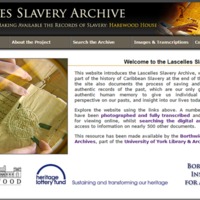
Lascelles Slavery Archive
The Lascelles Slavery Archive was a collaborative project between the Borthwick Institute for Archives and Harewood House Trust to conserve, preserve and make available records relating to slavery from the archives of the Lascelles family of Harewood House, Yorkshire. The project deals with a new discovery of papers relating to the family's fortune based on its estates in the West Indies. Key documents providing evidence for the acquisition of the family's wealth, once thought lost, were found in poor condition during an inventory of Harewood House. The Lascelles Slavery Archive is available through the Borthwick's searchrooms as an online resource, and represents an important section of the larger archive of the Lascelles family held by West Yorkshire Archive Service.
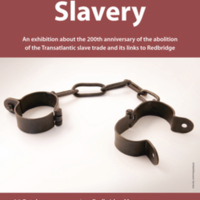
Redbridge and Slavery
Redbridge Museum's exhibition to mark the bicentenary examined the London Borough of Redbridge's connections to the slave trade and abolition. These links included local resident Josiah Child, once Governor of the East India Company, an investor in the Royal African Company and owner of plantations in Jamaica. The Mellish family of Woodford had connections with the West India Docks in London, built for the sugar trade. Alexander Stewart of Woodford owned Jamaican plantations and acted on behalf of owners of enslaved Africans in compensation claims after abolition. The exhibition also examined church records detailing some of the Black residents of Redbridge in the 17th and 18th centuries. Music from the Caribbean island of Dominica was included, as was a series of personal responses to the bicentenary by local residents.
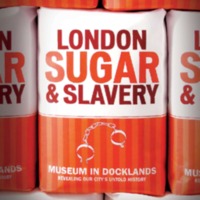
London, Sugar and Slavery
The Museum of London Docklands opened the London, Sugar and Slavery gallery in 2007, and it remains a permanent exhibition. The museum, housed in an old sugar warehouse on London’s West India Dock, retold the narrative of the transatlantic slave trade from the perspective of London, once the fourth largest slaving port in the world. Through personal accounts, film, music, interactive exhibits and over 140 objects, the exhibition looks at the various stages of the transatlantic slave trade, including life and trade on the West India Dock, and conditions for the enslaved on the Middle Passage and the Caribbean plantations. The final section of the gallery focuses on the legacies of the slave trade for British society today. Community collaborations also helped shape the gallery.
The museum also created a walking trail for the local area, highlighting key architectural features and buildings that had a role in the transatlantic slave trade. The Slave Map of London was developed in collaboration with three London museums: the Cuming Museum in Southwark, Bruce Castle Museum in Haringey and Fulham Palace Museum. Users navigated an online map to discover over 100 different locations throughout London which played a part in the transatlantic slave trade and the fight to end it. A schools programme that accompanied the opening of the exhibition included drama performances and workshops. Courses that ran alongside the exhibition in 2007 included ‘Resistance and Achievement: the story of African and Caribbean people in Britain’, in partnership with Middlesex University.
In 2018, the museum reflected on the 10 year anniversary of London, Sugar and Slavery with a workshop to explore the significance of the gallery, with contributions from artists, museum practitioners and emerging artists.
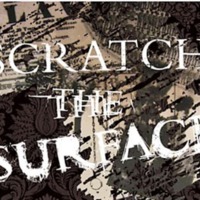
Scratch the Surface
Scratch the Surface at the National Gallery brought together two portraits, Johann Zoffany's 'Mrs Oswald' (1763-4) and Sir Joshua Reynolds's 'Colonel Tarleton' (1782), to explore the complex relationship between these sitters and slavery. Colonel Tarleton, as MP for Liverpool in the 1790s, argued in Parliament against the abolition of the transatlantic slave trade. Mrs Oswald, along with her husband Richard Oswald, owed part of their wealth to a number of plantations in the Americas. The artist Yinka Shonibare was invited to create a new installation in response to these two portraits, which was also on display. A varied programme of events and activities accompanied the exhibition, including tours, talks, workshops and films.
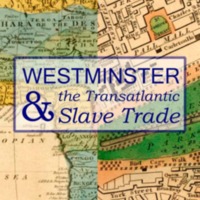
Westminster and the Transatlantic Slave Trade
An exhibition by the City of Westminster Archives Centre focused on the impact of the transatlantic slave trade and its abolition in Westminster, which drew on the Centre's archives and local studies collections. Links explored included the parish of St Anne's Westminster with St John's Antigua, and the large circle of planters living in Marylebone in the 18th and 19th centuries. The exhibition also documented the lives of the African residents of Westminster during the age of the slave trade. Some of the individuals looked at in the exhibition included James Somerset, Granville Sharp, Ignatius Sancho, Ottobah Cugoano, Olaudah Equiano, and the African activists who styled themselves 'Sons of Africa'.
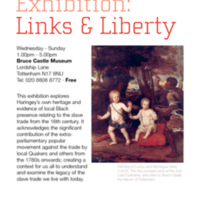
Links and Liberty
An exhibition at Bruce Castle Museum (in partnership with Euroart Studios) explored the transatlantic slave trade, Haringey's heritage relating to the trade and its legacy, and the historic Black presence in the borough from the 16th century onwards. There was a particular focus on the painting of Lucius and Montague Hare, sons of Lord Coleraine (former owner of Bruce Castle), with their African servant. The exhibition also looked at the extra-parliamentary popular movement against the trade by local Quakers such as Priscilla Wakefield and others. Contemporary dance workshops for secondary schools were led by dance company Movement Angol.
The Links and Liberty exhibition included 'Stolen', a life-size installation by artists at Euroart Studios (John Fowler, Lorraine Clarke and Nigel Young) of a section of a slave ship. School pupils were encouraged to climb inside to imagine conditions on board.
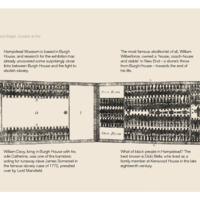
The Transatlantic Slave Trade: Hampstead Connections
An exhibition at Hampstead Museum (based in Burgh House) which examined the connections between Hampstead and slavery. It looked at how fortunes made in the West Indies funded the purchase of properties in this prosperous area, through men like William Beckford and Robert Milligan. Hampstead was also home to men and women tied to the abolitionist movement, such as Samuel Hoare. William Davy, living in Burgh House, was one of the barristers who acted for runaway slave James Somerset in the case of 1772, presided over by Lord Mansfield.
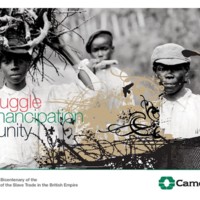
Struggle, Emancipation and Unity
The year-long programme of commemorative events from Camden Council was put together in consultation with the 1807-2007 Taskforce of local African and Caribbean community leaders. The key to these events was remembering slavery through the resistance of Africans, their celebration in their liberation and their unity in tackling present-day inequalities. Camden’s 18th and 19th Century Slavery Trail was created around the area. In eight stops, it explored the lives of men and women connected to the slave trade who lived and worked in the London Borough of Camden. The Resistance Film Season, in partnership with the British Museum, explored the legacy of the slave trade through a mixture of contemporary and classic films. Other events also included local exhibitions, poetry readings, debates and talks.
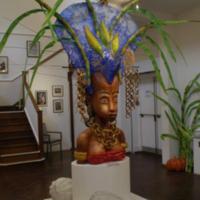
Parallel Views: Black History in Richmond
The Parallel Views exhibition and its associated community engagement programme explored the relevance of the bicentenary for communities in the London Borough of Richmond upon Thames, uncovering local associations with slavery and its abolition. It also told the parallel story of twin town Richmond, Virginia, USA, to broaden understanding of the transatlantic slave trade and the impact of its demise. The exhibition examined evidence of individuals of African origin who had come to Richmond, and residents with financial links to slavery and the slave trade, and to abolitionism. A film piece by choreographer and dance historian Dr Rodreguez King-Dorset explored the use of dance within the free Black community in London during the era of abolition. A display of contemporary artwork responded to the ideas of the exhibition. A sculpture by carnival artist Carl Gabriel linked consumers in Richmond and the conditions of production of slave-grown crops. The design was inspired by a series of workshops with local families. Artist-led workshops for children and young people led to the creation of a carnival costume piece which was included in the exhibition.
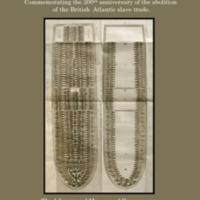
Squaring the Triangle: Freemasonry and Anti-Slavery
The exhibition at the Library and Museum of Freemasonry to mark the bicentenary arose from a project to catalogue their historical collections relating to Masonic history in the West Indies and America between 1760 and 1900. This period covers the establishment of African Lodge, the first Masonic lodge for African-Americans. Its first Master was Prince Hall, a freed slave and respected Boston resident who had fought for the British. From 1847 his name has been synonymous with Prince Hall Masonry, the first major Black Masonic organisation in the world. The library holds eleven letters written by or for Prince Hall. The exhibition and cataloguing of this correspondence enabled the library to start compiling details of early Black and Asian Freemasons in its collections. The exhibition also looked at members in the 18th and 19th century who were both slave owners and abolitionists, and the establishment of lodges in the Caribbean.
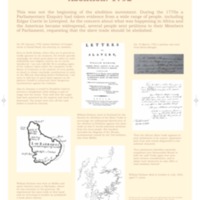
Dumfries and Galloway and the Transatlantic Slave Trade
An exhibition exploring the connections between the Scottish region of Dumfries and Galloway and the transatlantic slave trade toured Dumfries Museum, the Stewartry Museum in Kirkcudbright and Stranraer Museum. At each venue, the exhibition was accompanied by displays of material and a lecture. The catalogue of new research to supplement the exhibition by Frances Wilkins set out to correct misunderstandings about the role of people from the region in the transatlantic slave trade, to prove a history of connections independent of Glasgow or anywhere else. Evidence suggests that men from smaller towns such as Dumfries and Kirkcudbright were involved in the transatlantic slave trade as merchants, slave traders or plantation owners. For example, in the late 18th century, plantation supplies were sent from Kirkcudbright to the island of Grenada; the vessels returned with rum, sugar, and cotton wool.
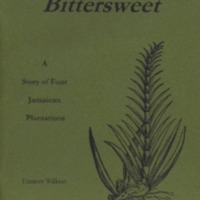
Bittersweet
The Bittersweet exhibition was held during the summer of 2007 at Tissington Hall, Derbyshire, home of the FitzHerbert family since the 17th century. The exhibition and accompanying booklet by Frances Wilkins describe life, work and slavery on four Jamaican sugar plantations inherited by the FitzHerbert family in the 18th century - Blue Mountain, Forrest, Grange Hill and Vere, plus the coffee plantation of Retrieve Mountain - and subsequently managed from Tissington Hall. Research of the FitzHerbert papers held at Derbyshire Record Office revealed evidence about the lives of the enslaved and the overseers, the sugar production process and the connections to plantation owners in England. The exhibition was housed at Tissington during 2007 and then was available on loan to other houses in Derbyshire and to local schools. The exhibition coincided with Tissington’s annual Well Dressing celebrations. The special 2007 design to commemorate the bicentenary was by Wendy Greatorex (photographer Glyn Williams). Tissington Hall was one of several member houses of the Historic Houses Association to mark the bicentenary.
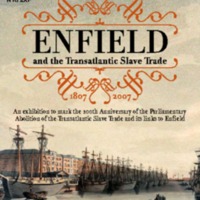
Enfield and the Transatlantic Slave Trade
An exhibition to mark the bicentenary was developed by Enfield Museum Service in partnership with the British Museum and Enfield Racial Equality Council. The exhibition looked at West African culture, the development of the local African community, the links between the transatlantic slave trade and Enfield, wealthy landowners and Quaker abolitionists who lived in the area. Free family days held during school vacations offered traditional Ghanaian story-telling, dancing and drumming, crafts and object handling. Living History Days gave visitors the opportunity to meet actors portraying William Wilberforce and Olaudah Equiano. School workshops included a drama session and performance about a runaway slave developed from material from Lambeth Archive. The museum service also produced a book, edited by Valerie Munday, which explored further the links between Enfield and the slave trade. The book was sent to all schools in the borough, and formed the basis of a teaching resource aimed at Key Stages 2 and 3. Loan boxes and handling collections provided by the museum service include Ghanaian artefacts and items relating to the slave trade. In 2011, Enfield Racial Equality Council unveiled a plaque to commemorate abolition at the Enfield Civic Centre.